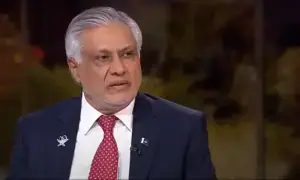This simple metric explains how life became harder for Pakistanis in 2022
The year 2022 was one of many upheavals in Pakistan - governments changed, assemblies dissolved and elections took place. In the meantime, an economic meltdown loomed menacingly in the background, slowly coming closer.
While inflation numbers and economic growth numbers will give a more comprehensive and multi-faceted answer to the question, there might be a much simpler metric to explain what happened to the ease of living in Pakistan. That metric is the ability to afford food.
A recent analysis examines this metric through a simple query: have wages increased more than the price of food?
Let us first look at an average food cart that a Pakistani citizen needs. Bear in mind that these prices and quantities are averaged.

The price of this latest and very basic food basket comes to Rs 9,914 which is higher by 26.5% compared to last year. The same basket cost Rs 7,835 last year.
Now let’s look at the wages.
With the government’s latest regulations the minimum wage has been raised to Rs 25,000. However this study makes its assumption on the basis of take-home wage which comes to Rs 24,750. This is 24.6% higher than last year’s minimum wage of 19,870.
On a year-to-year basis with the quantities in the food basket kept constant, minimum wagers in pakistan were spending 39.4% of their monthly wage on food while they are spending 40.1% of their wage on food now. Spending a higher percentage of your income on the same amount of food last year means that inflation has not just offset the increase in wages but actually left people worse off.
The study also explains how affordable the same amount of food is for minimum wage earners in other countries. More developed countries such as UK and Australia have single digit percentages (6.5% and 7.4%) respectively. Many Asian countries are in worse off than Pakistan in this metric, even economies rapidly climbing upwards such as India (59.4%) and Vietnam (63.3%).

There are of course some weaknesses in this methodology. The main is that this analysis assumes that the minimum wage set by the government is fully enforced in Pakistan. The problem with countries like Pakistan that struggle with transparency in data collection and uniform enforcement of laws is that a large segment of the population does not even earn the minimum wage amount. For those individuals and families, access to food has gotten even more difficult.
For the latest news, follow us on Twitter @Aaj_Urdu. We are also on Facebook, Instagram and YouTube.
















Comments are closed on this story.